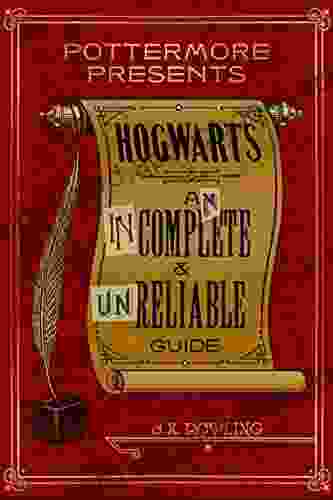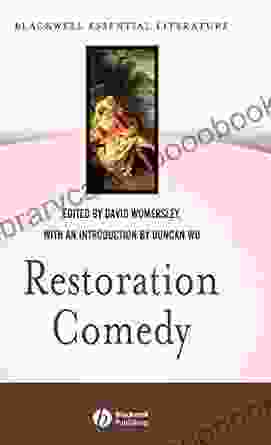How Partisan Divisions Came to the Supreme Court: An In-Depth Examination

The Supreme Court of the United States, revered as the ultimate arbiter of the law, has long been a cornerstone of American democracy. However, in recent decades, the Court has become increasingly polarized along partisan lines, raising concerns about its ability to remain an impartial and apolitical institution. This article delves into the historical roots, evolving dynamics, and far-reaching consequences of partisan divisions within the Supreme Court, shedding light on their impact on judicial decision-making and the future of American democracy.
4.5 out of 5
| Language | : | English |
| File size | : | 2911 KB |
| Text-to-Speech | : | Enabled |
| Screen Reader | : | Supported |
| Enhanced typesetting | : | Enabled |
| Word Wise | : | Enabled |
| Print length | : | 259 pages |
| Lending | : | Enabled |
| X-Ray for textbooks | : | Enabled |
| Item Weight | : | 9.2 ounces |
Historical Roots
The seeds of partisan divisions within the Supreme Court were sown in the early years of the Republic. The Federalist Party, led by Alexander Hamilton, favored a strong central government, while the Democratic-Republican Party, led by Thomas Jefferson, advocated for states' rights and a limited federal role. These political divisions often found their way into the Court's deliberations, with Justices appointed by each party tending to align with their respective political ideologies.
During the 19th century, the rise of the abolitionist movement and the subsequent Civil War further exacerbated partisan divisions within the Court. Justices from the North and South often held opposing views on the legality of slavery and the powers of the federal government. The Dred Scott decision of 1857, which ruled that African Americans were not citizens and could not sue in federal court, is a prime example of the Court's partisan divide during this period.
Evolving Dynamics
In the 20th century, the Supreme Court's partisan divisions continued to evolve, influenced by factors such as the rise of interest groups, the media, and public opinion. The Court's decisions on issues such as civil rights, abortion, and campaign finance have often fallen along partisan lines, with Justices appointed by Republican presidents tending to be more conservative, while those appointed by Democratic presidents tend to be more liberal.
One of the most significant developments in the evolution of partisan divisions within the Supreme Court has been the increasing ideological polarization of the Justices themselves. In the past, Justices were often appointed based on their legal qualifications and experience, rather than their political views. However, in recent decades, presidents have increasingly sought to appoint Justices who share their own political ideologies, leading to a more polarized Court.
Consequences for Judicial Decision-Making
The increasing partisan divisions within the Supreme Court have had a significant impact on judicial decision-making. In many cases, the Court's decisions are no longer based on a consensus among the Justices, but rather on the ideological divide between the conservative and liberal blocs. This has led to a decline in the Court's legitimacy and public trust.
Furthermore, partisan divisions have made it more difficult for the Court to resolve controversial issues. In recent years, the Court has often been deadlocked on major cases, with the conservative and liberal Justices voting along party lines. This has resulted in a lack of clear guidance on important legal issues and has further eroded the Court's authority.
Implications for American Democracy
The partisan divisions within the Supreme Court have far-reaching implications for American democracy. The Court is the ultimate interpreter of the Constitution and its decisions have a profound impact on the lives of all Americans. When the Court is seen as a partisan institution, it undermines its ability to act as an impartial arbiter of the law.
Furthermore, partisan divisions within the Court can lead to a lack of accountability. When Justices are appointed based on their political ideologies, they may be less likely to be held accountable for their decisions. This can lead to a decline in the quality of judicial decision-making and a weakening of the rule of law.
The partisan divisions within the Supreme Court are a complex and evolving issue with deep historical roots. The increasing polarization of the Justices and the impact of partisan politics on judicial decision-making have had significant consequences for the Court's legitimacy and its ability to serve as an impartial arbiter of the law. As the Court continues to face controversial issues in the years to come, it is crucial to understand the historical and contemporary dynamics of partisan divisions and their implications for American democracy.
4.5 out of 5
| Language | : | English |
| File size | : | 2911 KB |
| Text-to-Speech | : | Enabled |
| Screen Reader | : | Supported |
| Enhanced typesetting | : | Enabled |
| Word Wise | : | Enabled |
| Print length | : | 259 pages |
| Lending | : | Enabled |
| X-Ray for textbooks | : | Enabled |
| Item Weight | : | 9.2 ounces |
Do you want to contribute by writing guest posts on this blog?
Please contact us and send us a resume of previous articles that you have written.
 Book
Book Novel
Novel Page
Page Chapter
Chapter Text
Text Story
Story Genre
Genre Reader
Reader Library
Library Paperback
Paperback E-book
E-book Magazine
Magazine Newspaper
Newspaper Paragraph
Paragraph Sentence
Sentence Bookmark
Bookmark Shelf
Shelf Glossary
Glossary Bibliography
Bibliography Foreword
Foreword Preface
Preface Synopsis
Synopsis Annotation
Annotation Footnote
Footnote Manuscript
Manuscript Scroll
Scroll Codex
Codex Tome
Tome Bestseller
Bestseller Classics
Classics Library card
Library card Narrative
Narrative Biography
Biography Autobiography
Autobiography Memoir
Memoir Reference
Reference Encyclopedia
Encyclopedia Simon Sommerville
Simon Sommerville Emma Donoghue
Emma Donoghue Amy Zoellers
Amy Zoellers Leni Levenson Wiener
Leni Levenson Wiener John Van Dreal
John Van Dreal Amanda Coyne
Amanda Coyne A K Koonce
A K Koonce Deborah A Thomas
Deborah A Thomas Gayle Berry
Gayle Berry J K Rowling
J K Rowling Ama Ata Aidoo
Ama Ata Aidoo Anahid Nersessian
Anahid Nersessian Ana Leen
Ana Leen Robin Barratt
Robin Barratt Xiaochen Su
Xiaochen Su Janet Berliner
Janet Berliner Anneliese Dodds
Anneliese Dodds Andre Gw Hagestedt
Andre Gw Hagestedt George F Walker
George F Walker Anderson Reynolds
Anderson Reynolds
Light bulbAdvertise smarter! Our strategic ad space ensures maximum exposure. Reserve your spot today!

 Fred FosterUnleash Your Inner Planeswalker with the Captivating "Test of Metal: Magic:...
Fred FosterUnleash Your Inner Planeswalker with the Captivating "Test of Metal: Magic:... Todd TurnerFollow ·12.4k
Todd TurnerFollow ·12.4k Herb SimmonsFollow ·4k
Herb SimmonsFollow ·4k Miguel NelsonFollow ·2.8k
Miguel NelsonFollow ·2.8k Edmund HayesFollow ·13k
Edmund HayesFollow ·13k Robin PowellFollow ·12.3k
Robin PowellFollow ·12.3k Maurice ParkerFollow ·16.6k
Maurice ParkerFollow ·16.6k Jamison CoxFollow ·14.8k
Jamison CoxFollow ·14.8k Simon MitchellFollow ·13.3k
Simon MitchellFollow ·13.3k

 Roald Dahl
Roald DahlImmerse Yourself in a Mesmerizing Tapestry of Creativity:...
Prepare to be captivated by "Spectra," an...

 Clarence Brooks
Clarence BrooksUnleash Your Inner Taylor with Red Piano Vocal Guitar:...
Embrace the Red Era...

 Jeffrey Hayes
Jeffrey HayesUnlock Your Child's Academic Potential: A Comprehensive...
In today's rapidly changing...

 William Golding
William GoldingBrave Elizabeth: A Captivating Tale of Resilience and...
Immerse Yourself in a Riveting Historical...

 Curtis Stewart
Curtis StewartUnveiling the Heartfelt Melodies of Taylor Swift: A...
Step into the enchanting world of Taylor...
4.5 out of 5
| Language | : | English |
| File size | : | 2911 KB |
| Text-to-Speech | : | Enabled |
| Screen Reader | : | Supported |
| Enhanced typesetting | : | Enabled |
| Word Wise | : | Enabled |
| Print length | : | 259 pages |
| Lending | : | Enabled |
| X-Ray for textbooks | : | Enabled |
| Item Weight | : | 9.2 ounces |












